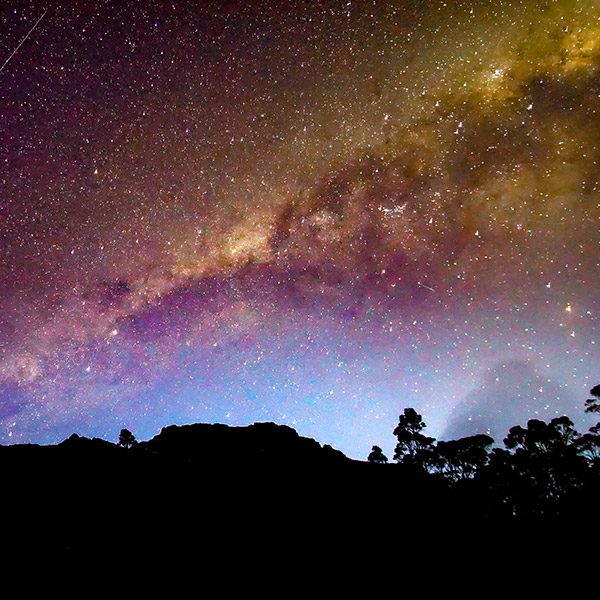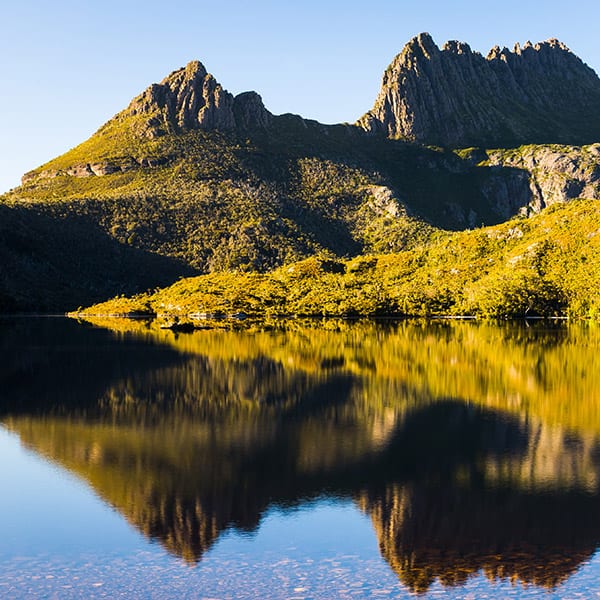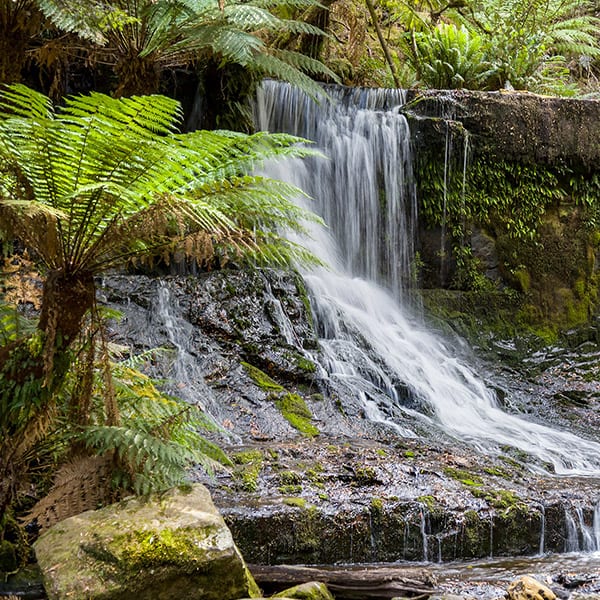The Overland Track, TAS
Australia
Experience Australia’s premier alpine walk, the Overland Track in Cradle Valley, Tasmania.
Trip duration:
6 days
Challenge duration:
6 days
Challenge grade:
4/5
Departure months:
October to May
Accommodation:
Camping
Hiking the Overland Track
Beginning at the iconic Cradle Mountain and ending at Lake St Clair, Australia's deepest lake, this 65 kilometre long six-day trek takes you to the heart of the Cradle Mountain-Lake St Clair National Park.
Experience breathtaking landscapes of glacially carved valleys, ancient rainforests, fragrant eucalypt forests and beautiful alpine meadows. Your journey will be physically demanding, but well worth the effort.
And after a long day of trekking, you’ll retreat each evening to the only private accommodation along the trail, where a hot shower, delicious meal and a glass of Tasmanian wine awaits you.
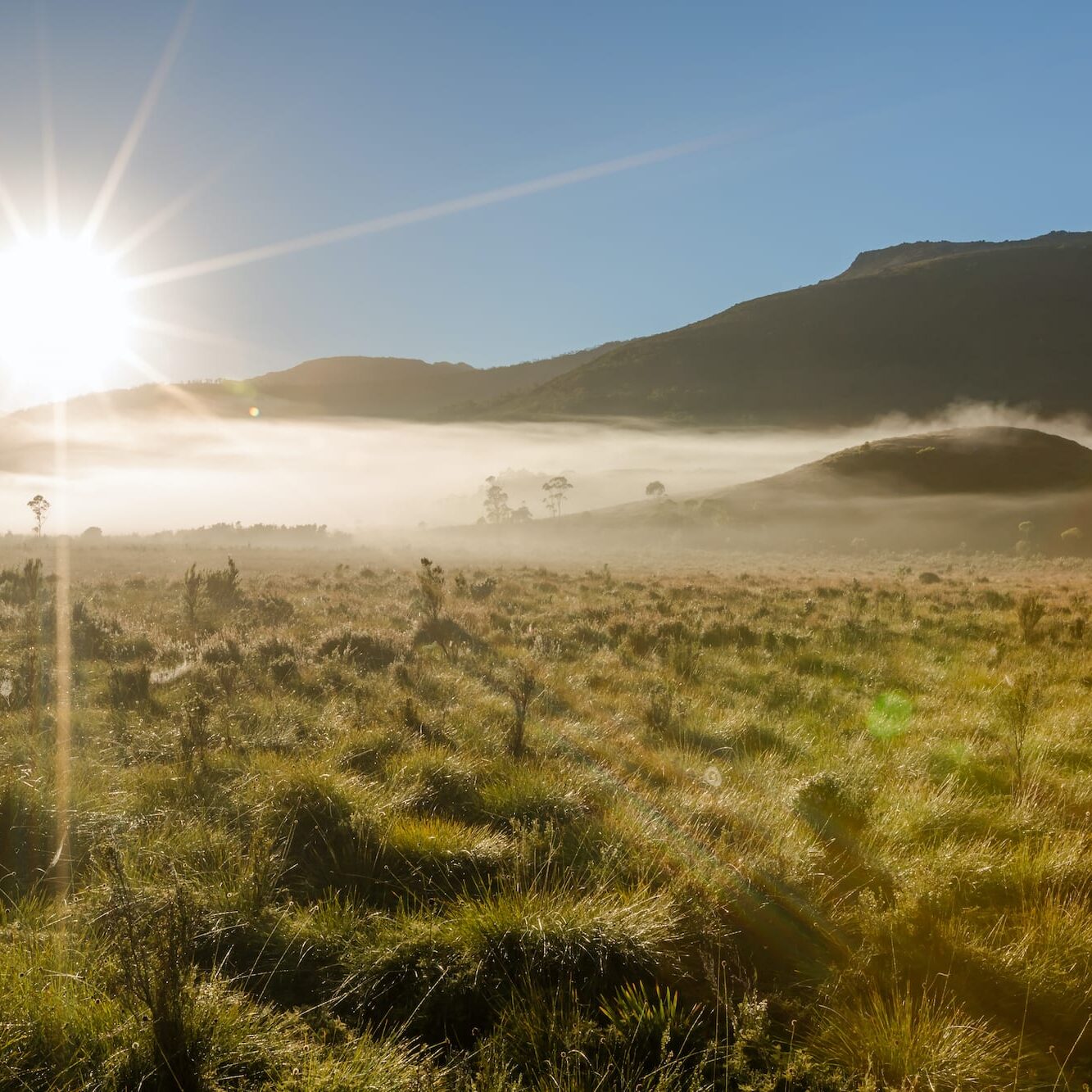
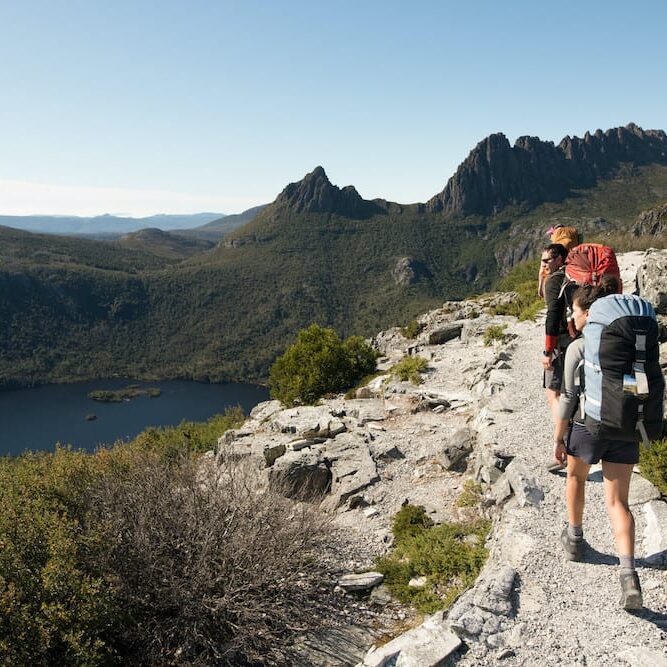
Why you'll love this adventure
- Trek through the heart of the Cradle Mountain-Lake St Clair National Park
- Experience the vast landscape of glacially carved valleys, ancient rainforests, eucalyptus forests and stunning alpine meadows
- Relax each evening in a warm, private hut with freshly cooked meals
- Raise vital funds for your chosen cause and make friends with like-minded people when you travel for good
Trip notes
Day 1: Launceston - Ronny Creek - Waterfall Valley
Welcome to one of Australia’s most epic walks, the Overland Track. Your adventure begins with a pickup at 7am from Launceston CBD. One our departure, we head west from Launceston, through the picturesque scenery, to begin our adventure at Ronny Creek in Cradle Valley. For the first section of the track, we cross a small grass plain, passing Crater Creek, Crater Lake, and make our way up to Marion’s Lookout for sweeping views, from where we can see the iconic Cradle Mountain and the curved Dove Lake. The track continues past the historic Kitchen Hut, with its unusual double story design, and traversing the shoulder of Cradle Mountain surrounded by Tasmanian snow gums. Over 700 million years ago the ground beneath your feet was shaped by glaciers grinding through the landscape. We continue on to the Cradle Cirque, passing the turnoff to Barn Bluff, and finally descend into Waterfall Valley, where we’ll camp for the night.
Accommodation: Camping
Trekking Distance: 10km (4-5 hours)
Meals: L D
Day 2: Waterfall Valley - Lake Windermere
Above Waterfall Valley is Barn Bluff, which juts out of the landscape in a distinctive cone-shaped peak. This morning you’ll have the opportunity to climb the bluff if the conditions are right, continuing on to Lake Windermere in the afternoon. Waterfall Valley is, unsurprisingly enough, full of beautiful cascades, and we’ll pass them as the track undulates across moorlands scattered with pencil pines, myrtles and snow gums. Keep an eye out for Tasmanian Devils, echidnas and wombats – though you may see the latter’s distinctive cube shaped poop more often than the mammals themselves! As we crest the moorland, enjoy breathtaking views across Lake Windermere, whose dark colour is caused by nutrients and oils leaking from the surrounding grass into the water. We our way around the shore of the lake to tonight’s campsite, nestled in a scattered forest.
Accommodation: Camping
Trekking Distance: 8km (3-4 hours)
Meals: B L D
Day 3: Lake Windermere - Pelion Hut
Today is our longest trekking day, and one of the most rewarding. The day begins with a walk through lightly timbered forest and across buttongrass moorlands to the lookout at Forth Gorge. In the distance the peaks of Mounts Oakleigh, Ossa, Pelion East and West, as well as the Du Cane Range, pepper the horizon. We then follow some small ascents and descents into the forest glade of Frog Flats, a wet section of forest crossed by the River Forth that’s home to some beautifully coloured mosses and fungi. Next, climb through forest to Pelion Plains, where the Forth Valley Track diverts off to Old Pelion Hut, which was built by copper miners at the very end of the 19th century. For the next 20 or so years, cattle drovers and trappers plied their trade here, before the area was declared a scenic reserve in 1922. We then continue along the shore of Douglas Creek to New Pelion Hut, the largest of the track’s huts, which sits at the junction of the Overland and Arm River tracks.
Accommodation: Camping
Trekking Distance: 17km (6-7 hours)
Meals: B L D
Day 4: Pelion Gap to Kia Ora Hut
We begin today with a gradual climb up to Pelion Gap (1,126 m). Here the track hits a crossroads with Mt Pelion to the east and to the west towering Mt Ossa, Tasmania’s highest peak at 1,617m. If the weather’s right, there will be the option to climb either of the peaks today. Both summits boast amazing views of the national park and beyond its boundaries, and are well worth the extra effort. From the Pelion Gap crossroads the track passes through the glaciated Pinestone Valley and on to Kia Ora Hut, which sits on a creek of the same name and is nestled below the Ducane Range and Cathedral Mountain on the opposite side.
Accommodation: Camping
Trekking distance: 9km (4 hours) and 3-4 additional hours for a side trip
Meals: B L D
Day 5: Kia Ora Hut - Du Cane Gap - Windy Ridge Hut
We depart Kia Ora Hut and continue on through myrtle beech rainforest to Du Cane Hut, built in 1910 out of King Billy Pine by a trapper as a base for his trade. Further down the track we take a side trip to see the falls of D’Alton, Fergusson and Hartnett, which tumble into the Mersey River in spectacular fashion, especially after recent rainfall. Back on the main track, the path climbs steadily to Du Cane Gap (1,070 m), where Mt Geryon and the Acropolis (1,471 m) of the Du Cane Range are the peaks that dominate the views. From here the track descends through eucalypt forest to Windy Ridge Hut, the newest hut on the track and our spot to swap stories on the final night of our adventure.
Accommodation: Camping
Trekking Distance: 10km (5 hours)
Meals: B L D
Day 6: Windy Hut Ridge - Narcissus River - Launceston
Welcome to the final day of your Overland Track adventure. Leaving Windy Ridge Hut, we descend with the track down the valley of temperate rainforest and eucalypt forest to the Narcissus River. We pass the path which splits off to take walkers to the base of the Du Cane Range and Pine Valley Hut, the base for access to the Acropolis and the Labyrinth and then follow the track down to a suspension bridge over the Narcissus River and the end is in sight – Lake St Clair and the finish of the Overland Track. Give yourself a huge pat on the back and your legs a rest with a ferry ride across the lake to Cynthia Bay. Jump back in the van for the ride back to Launceston, where your trip comes to an end, arriving around 6 pm this evening.
Trekking Distance: 10km, 4 hours
Meals: B L
Day 1: Launceston - Ronny Creek - Waterfall Valley
Welcome to one of Australia’s most epic walks, the Overland Track. Your adventure begins with a pickup at 7am from Launceston CBD. One our departure, we head west from Launceston, through the picturesque scenery, to begin our adventure at Ronny Creek in Cradle Valley. For the first section of the track, we cross a small grass plain, passing Crater Creek, Crater Lake, and make our way up to Marion’s Lookout for sweeping views, from where we can see the iconic Cradle Mountain and the curved Dove Lake. The track continues past the historic Kitchen Hut, with its unusual double story design, and traversing the shoulder of Cradle Mountain surrounded by Tasmanian snow gums. Over 700 million years ago the ground beneath your feet was shaped by glaciers grinding through the landscape. We continue on to the Cradle Cirque, passing the turnoff to Barn Bluff, and finally descend into Waterfall Valley, where we’ll camp for the night.
Accommodation: Camping
Trekking Distance: 10km (4-5 hours)
Meals: L D
Day 2: Waterfall Valley - Lake Windermere
Above Waterfall Valley is Barn Bluff, which juts out of the landscape in a distinctive cone-shaped peak. This morning you’ll have the opportunity to climb the bluff if the conditions are right, continuing on to Lake Windermere in the afternoon. Waterfall Valley is, unsurprisingly enough, full of beautiful cascades, and we’ll pass them as the track undulates across moorlands scattered with pencil pines, myrtles and snow gums. Keep an eye out for Tasmanian Devils, echidnas and wombats – though you may see the latter’s distinctive cube shaped poop more often than the mammals themselves! As we crest the moorland, enjoy breathtaking views across Lake Windermere, whose dark colour is caused by nutrients and oils leaking from the surrounding grass into the water. We our way around the shore of the lake to tonight’s campsite, nestled in a scattered forest.
Accommodation: Camping
Trekking Distance: 8km (3-4 hours)
Meals: B L D
Day 3: Lake Windermere - Pelion Hut
Today is our longest trekking day, and one of the most rewarding. The day begins with a walk through lightly timbered forest and across buttongrass moorlands to the lookout at Forth Gorge. In the distance the peaks of Mounts Oakleigh, Ossa, Pelion East and West, as well as the Du Cane Range, pepper the horizon. We then follow some small ascents and descents into the forest glade of Frog Flats, a wet section of forest crossed by the River Forth that’s home to some beautifully coloured mosses and fungi. Next, climb through forest to Pelion Plains, where the Forth Valley Track diverts off to Old Pelion Hut, which was built by copper miners at the very end of the 19th century. For the next 20 or so years, cattle drovers and trappers plied their trade here, before the area was declared a scenic reserve in 1922. We then continue along the shore of Douglas Creek to New Pelion Hut, the largest of the track’s huts, which sits at the junction of the Overland and Arm River tracks.
Accommodation: Camping
Trekking Distance: 17km (6-7 hours)
Meals: B L D
Day 4: Pelion Gap to Kia Ora Hut
We begin today with a gradual climb up to Pelion Gap (1,126 m). Here the track hits a crossroads with Mt Pelion to the east and to the west towering Mt Ossa, Tasmania’s highest peak at 1,617m. If the weather’s right, there will be the option to climb either of the peaks today. Both summits boast amazing views of the national park and beyond its boundaries, and are well worth the extra effort. From the Pelion Gap crossroads the track passes through the glaciated Pinestone Valley and on to Kia Ora Hut, which sits on a creek of the same name and is nestled below the Ducane Range and Cathedral Mountain on the opposite side.
Accommodation: Camping
Trekking distance: 9km (4 hours) and 3-4 additional hours for a side trip
Meals: B L D
Day 5: Kia Ora Hut - Du Cane Gap - Windy Ridge Hut
We depart Kia Ora Hut and continue on through myrtle beech rainforest to Du Cane Hut, built in 1910 out of King Billy Pine by a trapper as a base for his trade. Further down the track we take a side trip to see the falls of D’Alton, Fergusson and Hartnett, which tumble into the Mersey River in spectacular fashion, especially after recent rainfall. Back on the main track, the path climbs steadily to Du Cane Gap (1,070 m), where Mt Geryon and the Acropolis (1,471 m) of the Du Cane Range are the peaks that dominate the views. From here the track descends through eucalypt forest to Windy Ridge Hut, the newest hut on the track and our spot to swap stories on the final night of our adventure.
Accommodation: Camping
Trekking Distance: 10km (5 hours)
Meals: B L D
Day 6: Windy Hut Ridge - Narcissus River - Launceston
Welcome to the final day of your Overland Track adventure. Leaving Windy Ridge Hut, we descend with the track down the valley of temperate rainforest and eucalypt forest to the Narcissus River. We pass the path which splits off to take walkers to the base of the Du Cane Range and Pine Valley Hut, the base for access to the Acropolis and the Labyrinth and then follow the track down to a suspension bridge over the Narcissus River and the end is in sight – Lake St Clair and the finish of the Overland Track. Give yourself a huge pat on the back and your legs a rest with a ferry ride across the lake to Cynthia Bay. Jump back in the van for the ride back to Launceston, where your trip comes to an end, arriving around 6 pm this evening.
Trekking Distance: 10km, 4 hours
Meals: B L
Frequently asked questions
Can't find the answer to your question? Get in touch via email (info@inspiredadventure.com.au
About the adventure
How challenging is this adventure?
Your adventure is ranked 4/5. While no extensive trekking experience is required prior to registering, our adventures are specifically designed for people who are relatively fit and willing to train. The Overland Track trek is a physical challenge, and the fitter you are, the more you will enjoy the experience. It is essential that you prepare for this challenge.
Who will I be travelling with?
Our average group size at Inspired Adventures ranges from 10 to 20 people, but the maximum size for this itinerary is 12 participants. You can be sure that you have all come together with the shared purpose of making a difference to others and having the adventure of a lifetime.
The group will be led by a local tour guide with expert knowledge of the region. Many groups will also be accompanied by an Inspired Adventures team leader or doctor to support and motivate the team.
Where applicable, a charity representative may also join the team. This is a wonderful opportunity to learn more about your chosen charity and their work.
Can I join an Inspired Adventure on my own?
Of course, most people do! Throughout your adventure journey, we will connect you with your fellow adventurers so you can get to know each other before you hit the road.
What is the general age range of participants?
The minimum age for this adventure is 18, however younger ages are considered on application. We have had participants aged 16–84 take part in our challenges, all united by their sense of philanthropy and adventure.
Fitness and training
How do I train for this adventure?
We will provide you with basic information on how to prepare for your adventure when you register. We recommend that you consult your GP and a personal trainer to develop a training plan that will prepare you for the challenge.
It is sensible to start training as early as possible before you go on your trek. As part of your training, we recommend making use of your weekends to complete a full day hike and if possible, an overnight hike. You should aim to walk in hilly terrain for 6-8 hours and get up to do it again the following day comfortably. Conventional exercise routines which build strength, fitness and stamina, such as aerobics and light weight training can be beneficial, particularly if your fitness level is less than ideal.
Accommodation
What is the accommodation like?
Accommodation is basic camping.
Will I be sharing accommodation?
Accommodation on this adventure is based on twin-share. You will be paired with a teammate of the same gender and, whenever possible, age group. Single rooms are available at an additional cost and subject to availability.
I’m travelling with a friend, can we stay together?
If you’re travelling with a friend, please make note of this and we will pair you together.
What to expect
Do I need to carry my own pack and gear?
Yes, you will need to carry your own gear on this trek. Expect the weight of your pack to be up to around 15 kg. This includes a portion of the food for the trip, and a share of a tent which will be around 1.4 kg.
What is the food like?
Food is prepared daily by your guides onsite. Breakfasts are continental and lunches are picnic style. Lunch will be packed to carry with you on the trek. Dinners are a simple affair around at camp in the evenings.
I have dietary requirements, will I be catered for?
We are able to accommodate guests’ specific dietary requirements and can always prepare a meal to meet individual needs.
Will I have mobile phone reception?
You may not be able to use your phone at all times - but don't worry, it's all part of the experience! It is possible that during our trek you will have limited access at high points of the trail, and usually Telstra is best. Otherwise, enjoying switching off and getting back to nature.
Will I have access to electricity?
Yes, you will have access to power points at your accommodation.
What do I need to pack?
You will be sent a comprehensive packing list after you register for the adventure with everything you need to consider.
What weather can I expect?
The Cradle Mountain-Lake St Clair National Park has an average maximum of 18°C in summer and 7°C in winter. Evenings are colder, and it's not uncommon for temperatures to dip below zero overnight in winter. Please check local forecasts in the weeks leading up to your adventure for up-to-date weather information.
What happens if there is a medical emergency?
All Inspired Adventures guides and Team Leaders are first aid trained. Our guides carry a satellite phone to be used if further assistance is required.
How will you manage the risk of COVID-19?
See the COVID-19 section of our website for full details.
Costs and payments
What’s included in the travel cost?
Package inclusions vary from trip to trip so please refer to the specific trip notes for details.
Generally, the travel cost includes:
- Return transfers between Launceston
- Accommodation in private hut based on twin-share with shared bathrooms
- All meals and non-alcoholic beverages, plus a limited selection of Tasmanian wines
- Two qualified guides
- National Park and Overland Track passes
- Boat transfer across Lake St Clair
- Use of a backpack and Gore-tex jacket for the duration of the walk
- Sleeping bags
- Pillows and a comfortable mattress at each hut
- Sleeping sheet and pillowcase to carry with you
What’s not included in the travel cost?
Package exclusions vary from trip to trip so please refer to the specific trip notes for details.
Generally, the travel cost does not include:
- Airfares
- Airport transfers
- Travel insurance (highly recommended)
- Personal expenses
- Tips and gratuities
Are the travel costs subject to change?
We will do our best to keep the travel costs as quoted. However, please bear in mind they can change due to group size or factors out of our control. If absolutely necessary, Inspired Travel may have to add on an additional supplement fee should the current social distancing measures continue. This fee would be required if our operator needs to add on additional vehicles, equipment and/or staff.
Why do I need to pay a registration fee?
When you register, you will be required to pay a registration fee to secure your spot on the team. From the minute you register until you return from your adventure, the team at Inspired Adventures will provide you with everything you need - including a tailored fundraising plan, fitness advice and support with your travel preparations. You will receive access to your online adventure portal complete with your own online fundraising page and lots of resources to help you along the way. Your registration fee goes towards our cost of managing the adventure and supporting you on your journey.
How much spending money do I need?
We recommend that you allow $30 per day to cover any meals not included in the trip costs, souvenirs and gifts, drinks, and any additional activities you may wish to participate in. It is possible to travel comfortably on a smaller budget, and you can always withdraw cash, when required, while travelling.
Is it customary to tip?
Tipping is not compulsory, and you are encouraged to tip only an amount you find appropriate.
Travel insurance and visas
Do I need to have travel insurance?
Travel insurance is highly recommended for domestic adventures to cover cancellation, hospital, emergency evacuation and lost luggage. We recommend purchasing your policy as soon as possible. It is up to you to ensure you have fully comprehensive travel insurance and you will need to share these details with our team before departure. For more information, please visit www.inspiredadventures.com.au/travel-insurance-information.
About the adventure
How challenging is this adventure?
Your adventure is ranked 4/5. While no extensive trekking experience is required prior to registering, our adventures are specifically designed for people who are relatively fit and willing to train. The Overland Track trek is a physical challenge, and the fitter you are, the more you will enjoy the experience. It is essential that you prepare for this challenge.
Who will I be travelling with?
Our average group size at Inspired Adventures ranges from 10 to 20 people, but the maximum size for this itinerary is 12 participants. You can be sure that you have all come together with the shared purpose of making a difference to others and having the adventure of a lifetime.
The group will be led by a local tour guide with expert knowledge of the region. Many groups will also be accompanied by an Inspired Adventures team leader or doctor to support and motivate the team.
Where applicable, a charity representative may also join the team. This is a wonderful opportunity to learn more about your chosen charity and their work.
Can I join an Inspired Adventure on my own?
Of course, most people do! Throughout your adventure journey, we will connect you with your fellow adventurers so you can get to know each other before you hit the road.
What is the general age range of participants?
The minimum age for this adventure is 18, however younger ages are considered on application. We have had participants aged 16–84 take part in our challenges, all united by their sense of philanthropy and adventure.
Fitness and training
How do I train for this adventure?
We will provide you with basic information on how to prepare for your adventure when you register. We recommend that you consult your GP and a personal trainer to develop a training plan that will prepare you for the challenge.
It is sensible to start training as early as possible before you go on your trek. As part of your training, we recommend making use of your weekends to complete a full day hike and if possible, an overnight hike. You should aim to walk in hilly terrain for 6-8 hours and get up to do it again the following day comfortably. Conventional exercise routines which build strength, fitness and stamina, such as aerobics and light weight training can be beneficial, particularly if your fitness level is less than ideal.
Accommodation
What is the accommodation like?
Accommodation is basic camping.
Will I be sharing accommodation?
Accommodation on this adventure is based on twin-share. You will be paired with a teammate of the same gender and, whenever possible, age group. Single rooms are available at an additional cost and subject to availability.
I’m travelling with a friend, can we stay together?
If you’re travelling with a friend, please make note of this and we will pair you together.
What to expect
Do I need to carry my own pack and gear?
Yes, you will need to carry your own gear on this trek. Expect the weight of your pack to be up to around 15 kg. This includes a portion of the food for the trip, and a share of a tent which will be around 1.4 kg.
What is the food like?
Food is prepared daily by your guides onsite. Breakfasts are continental and lunches are picnic style. Lunch will be packed to carry with you on the trek. Dinners are a simple affair around at camp in the evenings.
I have dietary requirements, will I be catered for?
We are able to accommodate guests’ specific dietary requirements and can always prepare a meal to meet individual needs.
Will I have mobile phone reception?
You may not be able to use your phone at all times - but don't worry, it's all part of the experience! It is possible that during our trek you will have limited access at high points of the trail, and usually Telstra is best. Otherwise, enjoying switching off and getting back to nature.
Will I have access to electricity?
Yes, you will have access to power points at your accommodation.
What do I need to pack?
You will be sent a comprehensive packing list after you register for the adventure with everything you need to consider.
What weather can I expect?
The Cradle Mountain - Lake St Clair National Park has an average maximum of 18°C in summer and 7°C in winter. Evenings are colder, and it's not uncommon for temperatures to dip below zero overnight in winter. Please check local forecasts in the weeks leading up to your adventure for up-to-date weather information.
What happens if there is a medical emergency?
All Inspired Adventures guides and Team Leaders are first aid trained. Our guides carry a satellite phone to be used if further assistance is required.
How will you manage the risk of COVID-19?
See the COVID-19 section of our website for full details.
Costs and payments
What’s included in the travel cost?
Package inclusions vary from trip to trip so please refer to the specific trip notes for details.
Generally, the travel cost includes:
- Return transfers between Launceston
- Accommodation in private hut based on twin-share with shared bathrooms
- All meals and non-alcoholic beverages, plus a limited selection of Tasmanian wines
- Two qualified guides
- National Park and Overland Track passes
- Boat transfer across Lake St Clair
- Use of a backpack and Gore-tex jacket for the duration of the walk
- Sleeping bags
- Pillows and a comfortable mattress at each hut
- Sleeping sheet and pillowcase to carry with you
What’s not included in the travel cost?
Package exclusions vary from trip to trip so please refer to the specific trip notes for details.
Generally, the travel cost does not include:
- Airfares
- Airport transfers
- Travel insurance (highly recommended)
- Personal expenses
- Tips and gratuities
Are the travel costs subject to change?
We will do our best to keep the travel costs as quoted. However, please bear in mind they can change due to group size or factors out of our control. If absolutely necessary, Inspired Travel may have to add on an additional supplement fee should the current social distancing measures continue. This fee would be required if our operator needs to add on additional vehicles, equipment and/or staff.
Why do I need to pay a registration fee?
When you register, you will be required to pay a registration fee to secure your spot on the team. From the minute you register until you return from your adventure, the team at Inspired Adventures will provide you with everything you need - including a tailored fundraising plan, fitness advice and support with your travel preparations. You will receive access to your online adventure portal complete with your own online fundraising page and lots of resources to help you along the way. Your registration fee goes towards our cost of managing the adventure and supporting you on your journey.
How much spending money do I need?
We recommend that you allow $30 per day to cover any meals not included in the trip costs, souvenirs and gifts, drinks, and any additional activities you may wish to participate in. It is possible to travel comfortably on a smaller budget, and you can always withdraw cash, when required, while travelling.
Is it customary to tip?
Tipping is not compulsory, and you are encouraged to tip only an amount you find appropriate.
Travel insurance and visas
Do I need to have travel insurance?
Travel insurance is highly recommended for domestic adventures to cover cancellation, hospital, emergency evacuation and lost luggage. We recommend purchasing your policy as soon as possible. It is up to you to ensure you have fully comprehensive travel insurance and you will need to share these details with our team before departure. For more information, please visit www.inspiredadventures.com.au/travel-insurance-information.
All information is subject to change and will be confirmed upon your registration.
Responsible Travel
Caring for our adventurers, the communities we visit and the wellbeing of the planet is the heart of everything we do. This adventure is no exception.
Meaningful connections: Hear from Aranda Elders who will tell us about the history of the area.
Environment: We offset the emissions from this trip through carbon credit programs in partnership with Carbon Neutral.
Treading lightly: Trekking is a great, low-impact way to explore.
Small group travel: Our teams consist of a maximum of 25 people. Better for you, and better for the planet.
Responsible business: We’re a certified B-Corp, committed to using business as a force for good
Do you want to take your supporters on an adventure-of-a-lifetime?
Enquire today about an itinerary for your organisation.
Thank you!

